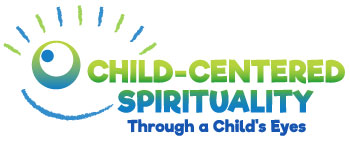 Celebrate when children make a realistic plan and act on one of their choices! (They are succeeding at a skill more than a few adults have not mastered.) It may not be perfect. They may have overlooked some important criteria. Maybe they need to move on to one of their other options. Yet with each new venture they learn valuable lessons about seeing things through.
Celebrate when children make a realistic plan and act on one of their choices! (They are succeeding at a skill more than a few adults have not mastered.) It may not be perfect. They may have overlooked some important criteria. Maybe they need to move on to one of their other options. Yet with each new venture they learn valuable lessons about seeing things through.
See it through — act on the choice
The first four steps of the C.H.O.O.S.E. tool teach children to think about the wisest choice they can make. Now they take action.
- C = Claim the problem
- H = How many choices can I find?
- O = Own and follow your moral compass
- O = One choice to try
- S = See it through
The best choices are not necessarily the easiest!
In order to “see it through” children learn to do things that are wise but feel scary or difficult—taking a risk. They don’t know how risks will turn out. But they only develop new skills by taking risks.
A child’s follow-through increases significantly when they ask for and receive help.
It’s okay to make mistakes or forget sometimes. The point is to keep talking about it and working at it until the child accomplishes the goal.
Conversation starter: A girl is learning to see it through
Shiloh, Melissa’s preteen daughter, made a choice that looked great on paper. She chose to talk to someone when she felt hurt instead of eating to cover up her feelings—and it’s proving to be a struggle to keep her commitment.
Shiloh walked into the house hoping no one was home.
 She didn’t feel like talking to anyone. She was in luck—nobody was home. Without even realizing what she was doing, she put her books on the table and went immediately to the kitchen and grabbed the package of Oreos. How lucky can you get! She took a fistful and started twisting them open so she could scrape the creamy middle off with her teeth before crunching into the chocolate wafers.
She didn’t feel like talking to anyone. She was in luck—nobody was home. Without even realizing what she was doing, she put her books on the table and went immediately to the kitchen and grabbed the package of Oreos. How lucky can you get! She took a fistful and started twisting them open so she could scrape the creamy middle off with her teeth before crunching into the chocolate wafers.
Somewhere in the distance she heard a car door slam. At the moment, however, chocolate wafers and creamy middles were all she cared about.
“Shiloh, where are you?” her mom yelled as she stumbled through the back door, her arms overstuffed with grocery bags. “I need some help with —” she stopped in mid-sentence when she saw the cookie package clutched tightly in her daughter’s arms. “Uh, I take it things didn’t go very well today.”
Shiloh looked up, surprised by her mother’s words. “Why do you say that?”
“You’re eating cookies as if your life depended on it.”
“I know you. Whenever you get upset, you eat. Are you going to get a part in the school play?”
“I don’t know yet,” Shiloh said with her mouth full of cookies. “The list gets posted next week.”
“Shiloh, stop it!” Her mom said, prying the cookie package out of her daughter’s hands. “What happened to the list of things you could do instead of eating when you feel anxious? You decided you wouldn’t do this anymore—eat to cover up your feelings. We’ve talked this through a million times.”
“It was a dumb decision. It’s too hard, Mom. I can’t do it!”
Her mom sighed and said, “Yes, you can! And I will help if you’ll let me.” When Shiloh nodded, her mother continued, “Great! I remember your decision was to tell someone what happened and how you are really feeling. Do you want to talk about it?”
Be aware of opportunities for follow-through on choices made by children this week. Praise them when they do well carrying out a choice. Be aware of their need for help. If the child did not follow through with a choice, make time to talk about it.
(Linda Sibley developed the C.H.O.O.S.E. tool and shared Shiloh’s story with us.)
Tweetable: It’s not enough to know what to do, a kid has to see it through and do it.How we can help them succeed. Click to Tweet
